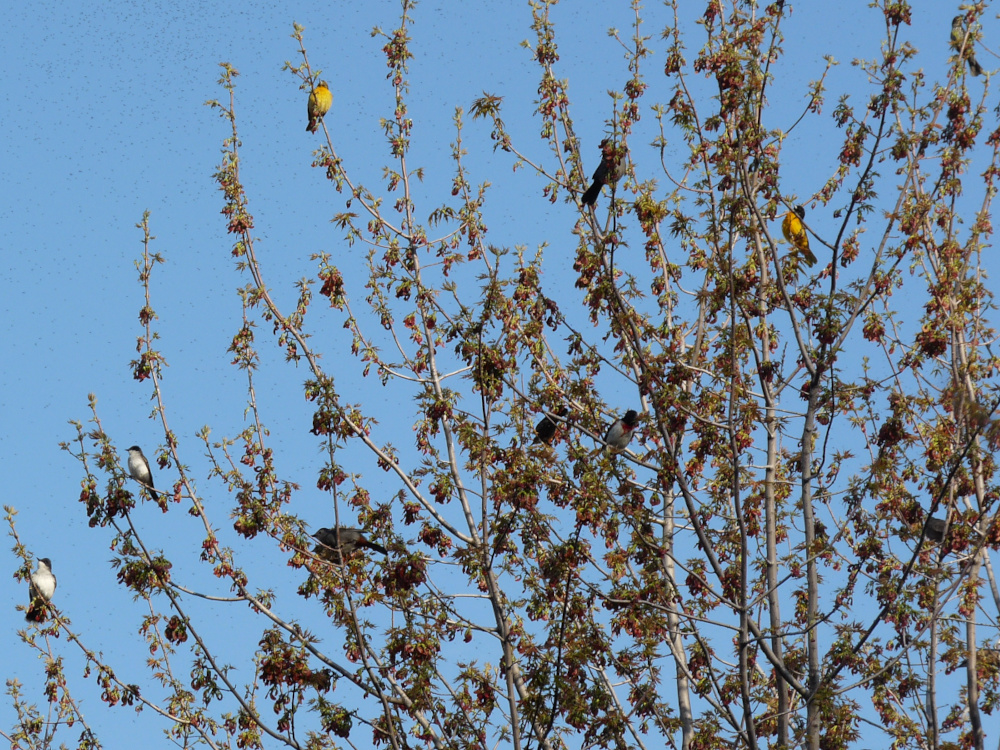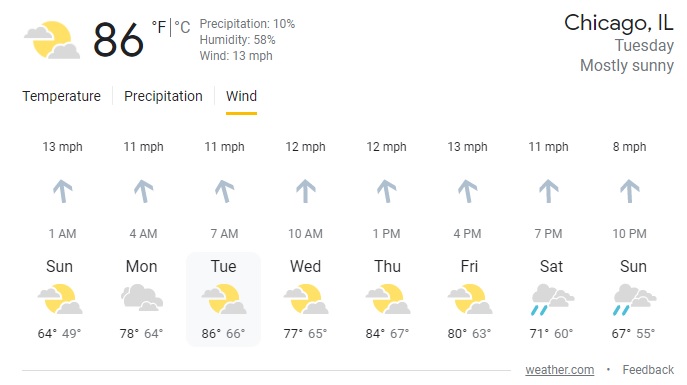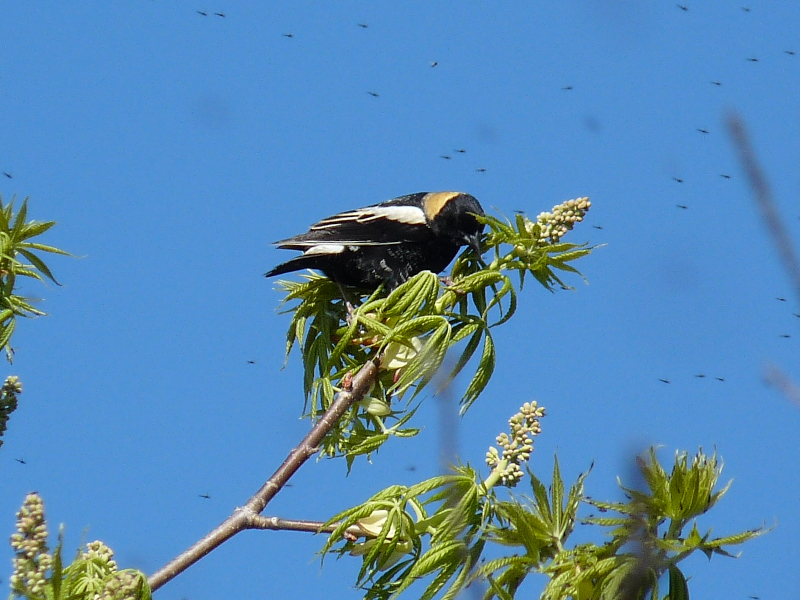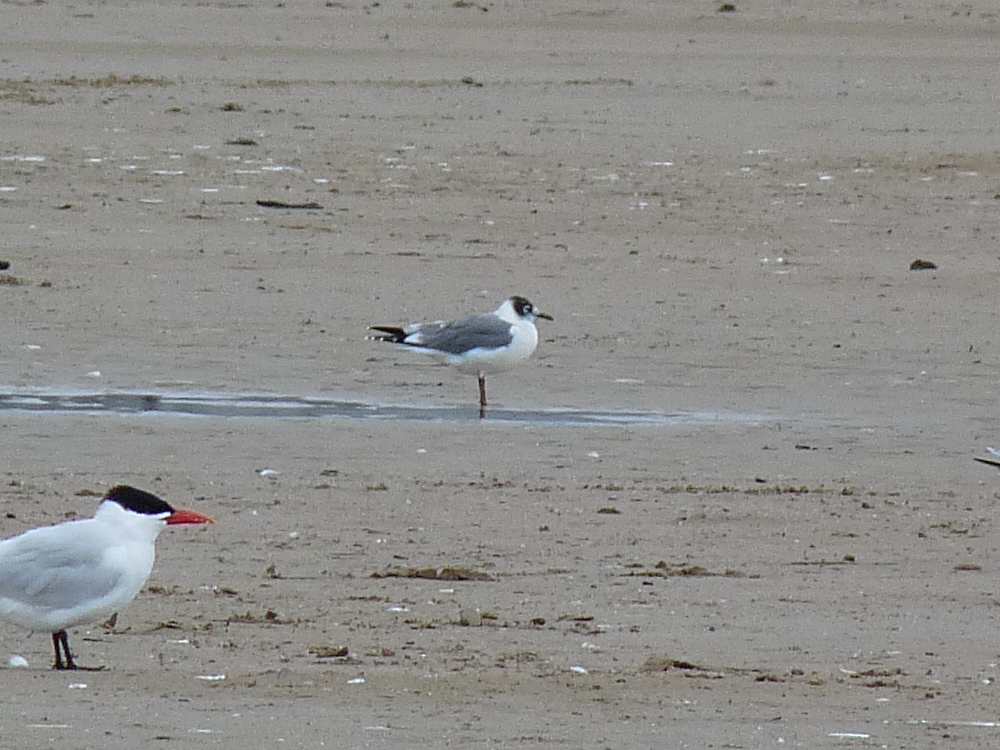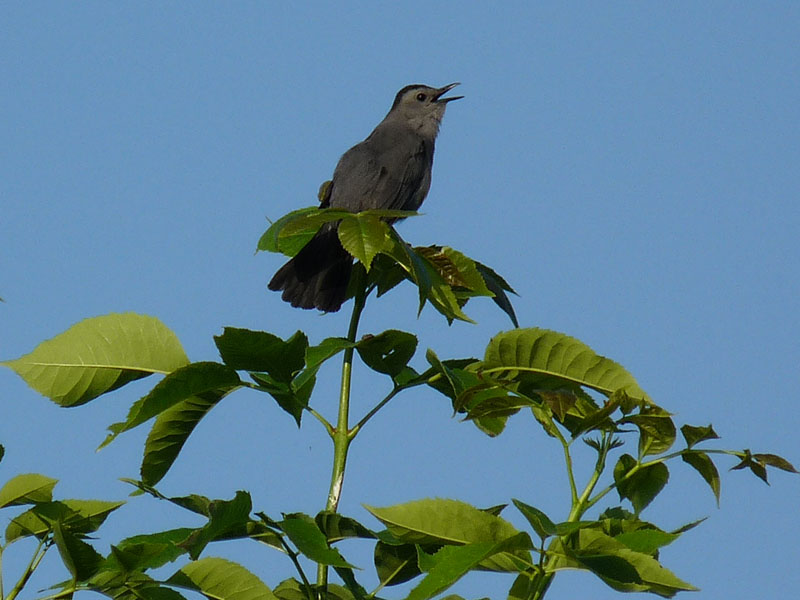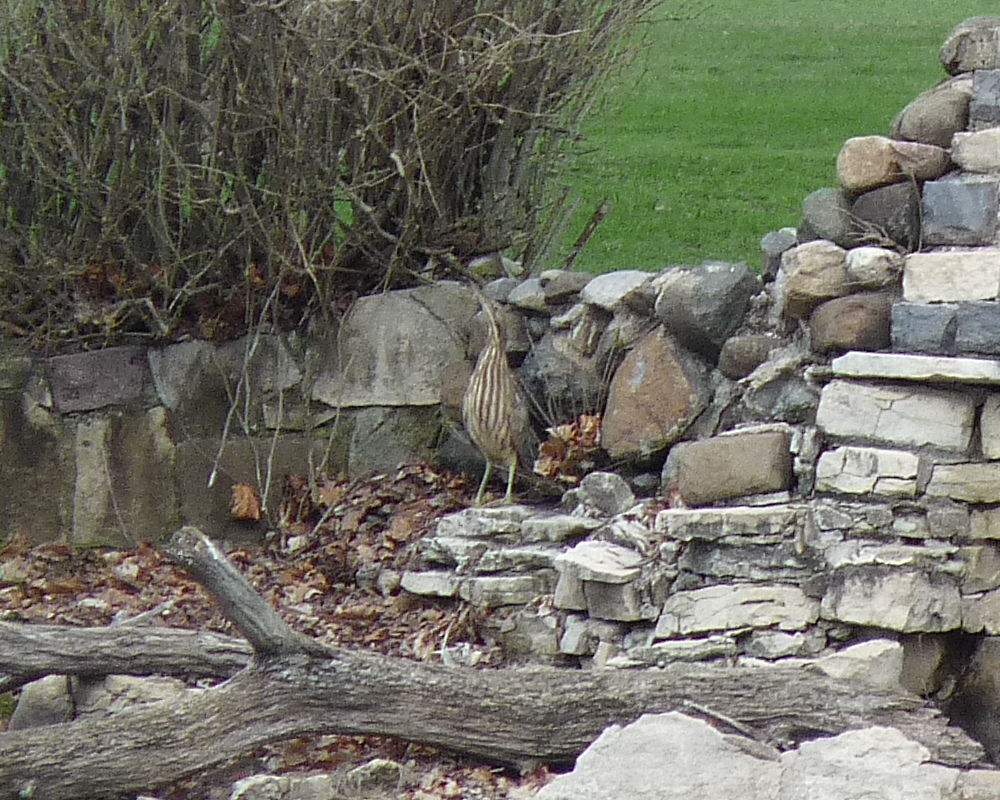You know you’re doing well when you see flocks of Eastern Kingbirds and Gray Catbirds feeding in the tops of trees. That’s what it was like at Montrose on May 9. I ended up with 86 species and the eBird total for all observers is over 120. We saw a big influx of migrant passerines, especially flycatchers, Indigo Buntings, Rose-breasted Grosbeaks, and Gray Catbirds. Many of these birds were feasting on midges. The south winds we’re getting are bringing in a lot of birds, and the good news is that these conditions will continue for the rest of the week. The photo I’ve included shows Eastern Kingbirds, Gray Catbirds, Red-winged Blackbirds, Baltimore Orioles, and a Rose-breasted Grosbeak. You can also see a ball of midges in the upper left corner of the pic.
Category Archives: Spring Bird Reports
Weather and Birding Forecast, May 9 to May 14 – Looking Good
The forecast for May 9 to May 14 looks good for a big movement of birds. We should see an influx of warblers, flycatchers, Catharus thrushes, and other migrants. Most of the week will see sustained south winds and temperatures in the 70s and 80s. This might turn out to be one of the best birding weeks of the year. If you can get out for a few hours on any day during the week, by all means do.
Midges, Midges Everywhere
What’s more interesting in this photo? The male Bobolink feeding near the top of the tree or the midges buzzing around him?
If you were at Montrose in late April or early May 2022, you couldn’t help but notice the swarms of midges (midges are insects related to mosquitoes). If you happened to walk through a cloud of them, a few may have ended up in your eyes or mouth. The midges may have been annoying to us but the birds were loving them. Seeing White-throated and Swamp Sparrows feasting on these tiny insects in the tree tops was odd, something you’d expect from warblers, but they were taking advantage of an abundant food source, like any smart bird would.
Photo: Male Bobolink from Montrose Point in Chicago, May 7, 2022
Franklin’s Gull, May 5, 2022
An immature Franklin’s Gull graced Montrose Beach on May 5. Franklin’s Gulls are uncommon but regular spring migrants at Montrose; most occur in late April and early May. The best way to look for them is to scan the flocks of gulls and terns that gather on the beach. This advice also applies to other, less common gulls, like Laughing, which also start to appear in late spring.
On a related side note, you should think about checking the beach in the afternoon and evening, especially the protected beach. Gulls, terns, and shorebirds settle down later in the day and you could find something unusual among the more common Herring and Ring-billed Gulls. The protected beach is fenced off on all sides and inaccessible to people and dogs, so the birds that end up there feel safer and tend to hang around.
Migration, April 30 – May 2
We’re having a strong late April and early May songbird migration. Sparrow numbers and variety have been excellent, with many White-throated and Swamp Sparrows and Eastern Towhees around. Smaller numbers of White-crowned, Lincoln’s, Savannah, and a few Lark, Vesper, and Clay-colored Sparrows have also been seen. Non-sparrow passerines like Brown Thrashers, Gray Catbirds, and Blue-gray Gnatcatchers have been in good numbers for those species. What we haven’t been seeing are large numbers of insect dependent songbirds like flycatchers, warblers, vireos, and Catharus thrushes, excluding Hermit. This is probably because of the unseasonably chilly temperatures and persistent north winds we’ve been experiencing. Unfortunately, as of May 2, the forecast out to about May 8 doesn’t indicate much change in this pattern. When it does break and we get a serious warm up, we should see a big influx of migrants. Mid may is typically the peak of spring migration, with the largest variety of passerines of the year. As always, keep checking the Montrose Point eBird Hotspot for the latest sightings.
American Bittern, April 13, 2022
American Bitterns can show up in strange places during migration. They prefer marshes and other wetlands but when those habitats aren’t available they have to settle for whatever they can find. I once saw one standing on top of a picnic table at the end of Navy Pier in Chicago, trying hard to be inconspicuous. The American Bittern in this photo was at the small pond in the Marovitz Golf Course at Montrose on April 13. The bird wasn’t hard to pick out but it must have felt secure blending in with the rocks and vegetation at that fountain.

